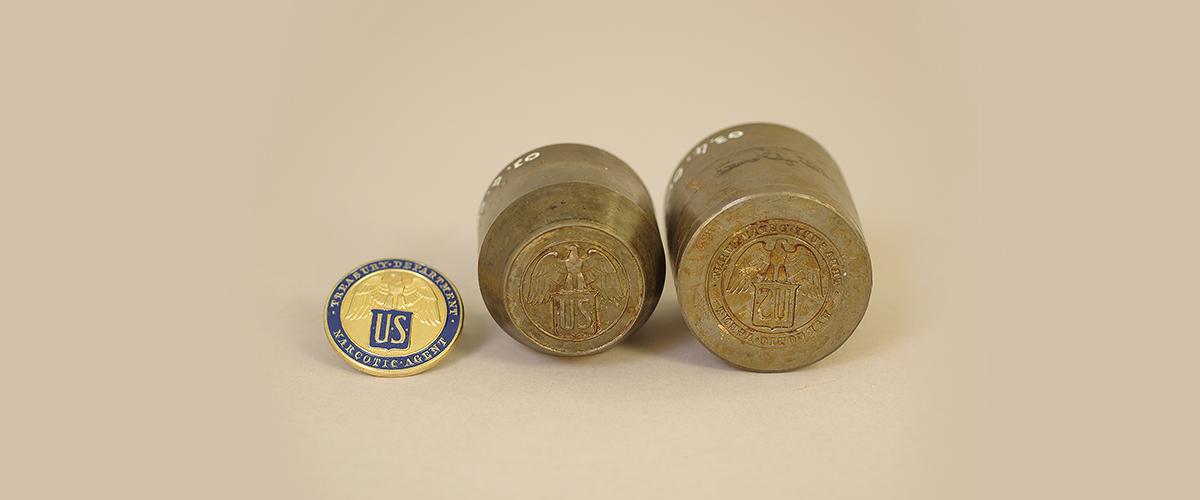Badge Molds

Accession Number:
2003.4.3; 2003.4.9Law enforcement officers have identified themselves with badges for centuries. Their designs vary widely and often change as departments or agencies grow, shrink, or are replaced. This is especially true of federal drug law enforcement badges. These molds were used by the Treasury Department to produce badges for early federal narcotic agents. While DEA was established in 1973, there were several other agencies and divisions decades before that enforced federal drug laws, and agents working for those organizations carried many different badges.
In 1914, Congress passed the first law in the United States to regulate whole classes of drugs. It was called the Harrison Narcotics Act, and it required certain kinds of drug manufacturers, sellers, and distributors to register with the Bureau of Internal Revenue. To keep track of the registrations and investigate those who failed to comply, the U.S. Treasury Department created the “Miscellaneous Division” under the Bureau, which included 162 federal narcotic agents.
At first, the agents designed their own badges. Some mimicked the style of military credentials, others looked like sheriffs’ badges from the Wild West. Agents used the badges to represent their authority in public, but courts across the country debated what exactly the Miscellaneous Division could do under the new narcotics law and the Constitution. Ultimately, Prohibition settled the debate. In 1919, states ratified the 18th amendment, which prohibited the manufacture, sale, and transportation of alcoholic beverages. Months later, Congress passed the Volstead Act, which created a Prohibition Unit under the Treasury Department to enforce the law. The unit included a Narcotics Division dedicated to enforcing the Harrison Narcotics Act.
As the division’s workload increased, and Prohibition was eventually repealed, Congress created a new federal drug law enforcement agency: the Federal Bureau of Narcotics, or FBN. The Treasury Department produced the badges carried by FBN agents, which made them more uniform and professional. To make a badge, the Treasury used steel molds, like these, to shape thin pieces of metal. Metal was placed between the two halves of the mold and pressed together, leaving a raised design. This specific mold made some of the earliest FBN badges, and it features a bald eagle with the abbreviation “U.S.” for United States.
Today, DEA special agents still carry badges with golden eagles proudly representing the United States Government. But these badges no longer say “Treasury Department.” DEA now operates under the Department of Justice.
Click here to view this artifact’s episode of “Stories from the Collection,” a monthly video series on the DEA Museum’s most exciting objects.


